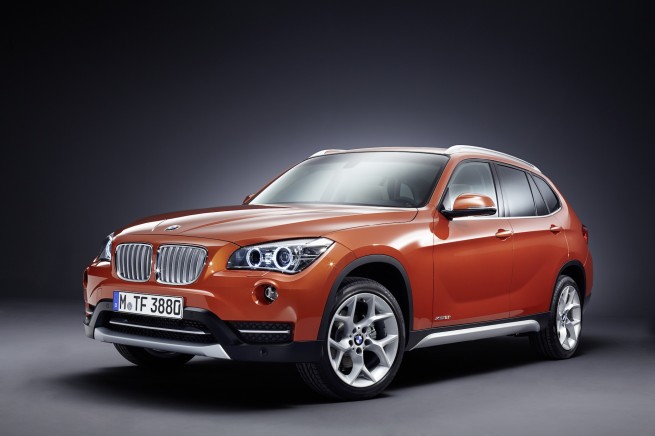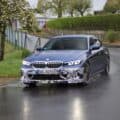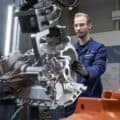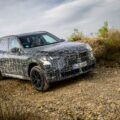Carbon Fiber
Ford recently announced that they’re jumping into carbon fiber in a big way. Current intentions are to use CF for body panels. They are using new CF processes to improve cycle times for parts production. It seems that resin transfer molding has arrived from a technological perspective.
What’s interesting is that BMW is building a passenger cell (‘life module’ in BMWspeak) while Ford is concentrating on exterior panels. BMW intends to build the exterior skin of its i-cars from molded plastic. The beauty of molded plastic is that styling changes can be incorporated early and often (just like voting in Chicago).
The downside to plastic skinned vehicles is comparatively large panel gaps – plastic expands and contracts at a higher rate than equivalent metal panels. That leads to a surface treatment known as layering – where panels overlap to hide the gaps.
The problem with carbon fiber is its cost. It is energy intensive to make – starting with rayon fiber and stripping the non-carbon atoms away under intense heat to form the carbon fiber thread. Rayon itself starts with a cellulose feed stock and can be created from renewable resources.
BMW works with SGL Carbon to produce the carbon fiber thread. The Moses Lake, WA plant uses hydroelectric power as its energy source (and at a very competitive cost – when ecology makes economic sense it’s a dual benefit). The thread has to be woven into cloth and from there pressed with resin, ‘the starch’, to make a finished panel.
Resin transfer molding eliminates steps and time from the process of forming carbon fiber panels. It is a key technology for mass production of carbon fiber.
But, as much as we’re intrigued by the process of building a CFRP passenger cell, it won’t overtake pressed metal panels in the near future. All you have to do to understand that is look at current investment in pressing operations. In particular BMW’s commitment to metal pressing based on its building a new pressing hall at Leipzig.
FWD
More rumors swirling around FWD. This go around the rumor involves the X1 starting with a FWD base (AWD optional, one presumes). The case can be made that, for smaller cars, the packaging benefits of FWD trump the separation of duties benefit of RWD (steering/power on different axles).
Has BMW discovered that buyers of small SUVs don’t care if the vehicle is FWD biased? (And look at the rear half shaft diameter of some of the cute-utes, they’re pencil thin – you’re not transferring much torque to the rear.) If so they can make the X1 even smaller in length and still maintain equivalent interior space – or keeping the current length expand the room. If you want RWD biased car, get an X3 or X5.
Previously BMW has built a number of FWD prototypes. BMWBLOG is aware of prototypes built prior to the acquisition of Dixi in the 1920s and a ‘513’ prototype after WW II. There undoubtedly have been more recent attempts – now culminating in a production model – but BMW doesn’t talk about those. (And since BMW has acquired Mini – how many BMW FWD prototypes have worn Mini cladding?)
One of our commentators asked about where to find information on the early FWD prototypes. Unfortunately not much is available on the web. BMW released a ‘Dimension’ publication (in English and German) with a German
title of, ‘Die Entwicklungsgeschichte der BMW Automobile 1918-1932’. I believe the English title is, ‘The Development History of BMW Automobiles 1918-1932’. This covers the pre-Dixi FWD prototypes.
The post WW II 513 is mentioned in a couple of publications. The late Jan Norbye’s, “BMW – Bavaria’s Driving Machines” talks about the FWD prototype and includes a black & white picture of it. Norbye referred to the prototype as a 331.
Halwart Schrader’s work, “BMW – A History” (translated for Automobile Quarterly by Ron Wakefield), has a color picture of the post-WW II FWD prototype but identifies it as a 513. (That may have been the proposed production name.)
Regardless, when BMW does build production FWD cars you can be certain that the first days output from the Leipzig plant will be an order of magnitude greater than all of the FWD prototypes BMW has built to this time.
Kicking Tires in Luebeck
After a couple of weeks in Pune, India, I decided to take a week of downtime in a section of Germany I had yet to visit. The trip took me to Luebeck, a charming city near the Baltic sea (Ostsee). While there I had the opportunity to meet up with one of BMWBLOG’s readers, Mirko Reinhardt. After a beer at Brauberger zu Luebeck, we hit a couple of local car dealerships to check the inventory.
What did I learn kicking tires at a couple of dealerships? Well, BMWs come with a wider array of options in Europe. In the US BMWs are pinched to the pricey end of the spectrum. In Germany you can get steel wheels, cloth, and a bevy of smaller engines (and diesels!) completely unavailable in the US.
The shame of it is they all drive like BMWs and they could expand market share. (I for one would rather have cloth seats than leather – but can’t get them in the US.) Oh well . . .







































































